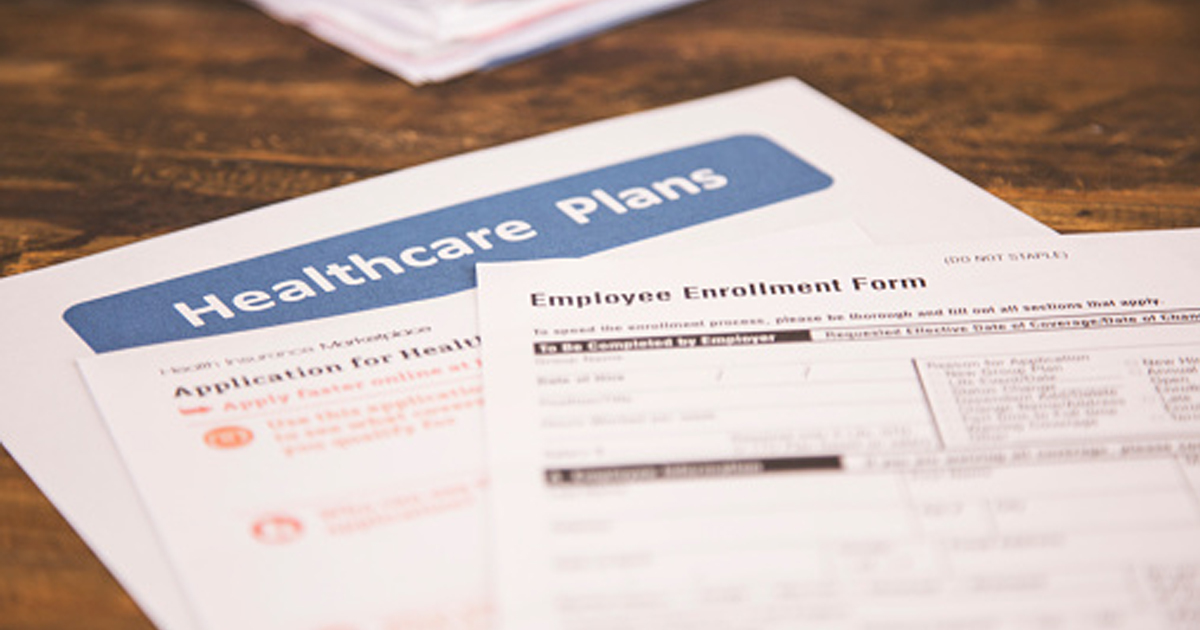Enhance employee benefits with HSAs, HRAs and FSAs
Employees expect a range of benefits they can personalize—so make sure to consider HSAs, HRAs and FSAs. These accounts can add real value to your benefits package.

Below, you'll find a quick overview of each account type, plus the latest IRS contribution limits available for download.
Health Savings Accounts (HSAs)
HSAs are flexible, tax-advantaged accounts employees can use to cover qualified medical expenses—now and well into retirement. As an employer, you can contribute to their accounts, let them make pre-tax contributions through payroll, or both.
To be eligible to contribute, employees need to be enrolled in an HSA-qualified health plan, also called a high-deductible health plan (HDHP), and they can’t have any other first-dollar coverage. That qualifying plan could be one you offer, one through a spouse’s coverage or an individual plan they’ve chosen on their own.
Keep in mind—the IRS reviews and updates the rules and contribution limits for HSAs annually, based on inflation, so it's important for employers to stay current so you can keep your employees informed.
Health Reimbursement Arrangements (HRAs)
HRAs are employer-funded accounts employees use to pay for qualified healthcare expenses not paid by insurance or other benefits. There are multiple types of HRAs you can choose to offer, and each can be customized to cover the expenses you choose up to the dollar limit you choose. Below is a description of each HRA plan and the IRS requirements and contribution limits.
Traditional HRAs
Traditional Health Reimbursement Arrangements (HRAs) are employer-funded accounts you can offer to help employees pay for qualified healthcare expenses. While you’re not required to pair them with a group health plan, doing so is often a smart move as it can mean avoiding added compliance requirements that apply to stand-alone health plans.
You decide which eligible expenses are covered (from the IRS-approved list under Section 213(d)) and how much your employees can be reimbursed. It’s a flexible way to offer meaningful support while keeping costs controlled.
Currently, there are no IRS Traditional HRA requirements and contribution limits.
Individual Coverage HRA (ICHRA)
This plan type has been growing in popularity in recent years—and for good reason. They allow employers the option to reimburse employees for individual health insurance premiums (rather than offering a traditional group plan), including Medicare, and can also cover qualified healthcare expenses under IRS Section 213(d), depending on how you design the plan.
With the right setup, an ICHRA can even help meet an Applicable Large Employer’s (ALE) requirement to offer affordable, minimum value coverage under the Affordable Care Act (ACA), so you can avoid potential IRS penalties under Section 4980H(b).
IRS ICHRA requirements:
- Available to employers of any size.
- Employers may offer both a health plan and an ICHRA, however, the ICHRA can only be offered to employees not eligible for the health plan.
- Employees must be enrolled in a health plan purchased on an individual basis (an employer’s group plan, including a spouse’s, will not count).
- Employees must attest that they have the required coverage to receive reimbursements from the plan.
As of now, there are no ICHRA contribution limits.
Qualified Small Employer HRA (QSEHRA)
QSEHRAs are a great option for small employers—defined by the IRS as those with fewer than 50 employees—who don’t offer a group health plan but still want to help their team with healthcare costs. With a QSEHRA, you can reimburse employees for individual health insurance premiums (including Medicare), and if you choose, qualified medical expenses under IRS Section 213(d).
It’s a flexible, budget-friendly way to support your employees’ health while keeping things simple.
IRS QSEHRA Requirements:
- Available only to employers, with fewer than 50 full-time employees, that do not offer a health plan.
- QSEHRAs must generally be offered on the same terms and benefit levels to all employees and do not allow for classes like an ICHRA.
- Employees must be enrolled in a health plan that meets minimum essential coverage (MEC) standards, either another group plan such as a spouse’s plan or individual coverage.
- Employees must attest that they have the required coverage to receive reimbursements from the plan.
Excepted Benefit HRA (EBHRA)
An EBHRA is a flexible HRA option that lets you set aside funds for employees to use on eligible medical expenses. Along with covering qualified healthcare costs under IRS Section 213(d) (or just a subset, depending on how you design the plan), you can also allow employees to use these funds for premiums on excepted benefit plans—like short-term limited-duration insurance (STLDI).
It’s a simple way to offer added support without tying it to your group health plan.
IRS EBHRA requirements:
- Employers of all sizes can offer an EBHRA.
- Employers wanting to offer an EBHRA must also make group health plan coverage available to participants, however, participants do not have to enroll in the group plan to participate in the EBHRA.
- The EBHRA offering must be the same for all employees in the employer group.
Lifestyle Spending Accounts (LSAs)
While not a type of HRA, LSAs work very similarly to the HRAs discussed above. These plans have been increasingly more popular with employers who want to help employees adopt healthier lifestyles by subsidizing the cost of things like fitness club memberships, home workout gear, healthy groceries and more. The plans are 100% customizable to your organization’s goals. Reimbursements from the plan are received on a taxable basis and must be included in the employee’s taxable gross income.
Currently, there are no LSA contribution limits.
Healthcare Flexible Spending Accounts (FSAs)
FSAs allow your participants to set aside pre-tax dollars to pay for qualified healthcare expenses.
- Traditional FSAs – Reimburse some or all the expenses listed as eligible for pre-tax reimbursement in IRS Section 213(d). Your organization can decide which IRS Section 213(d) expenses will be eligible for reimbursement under your plan.
- Limited Purpose FSAs – Reimburse only dental and/or vision expenses to allow participants to remain eligible to contribute to an HSA. The plans can begin reimbursing healthcare expenses after a deductible has been met, if your organization chooses to allow this.
Dependent Care Flexible Spending Accounts (DCFSAs)
Dependent Care Flexible Spending Accounts (DCFSAs), also known as Dependent Care Assistance Plans (DCAPs), allow your participants to save on care of qualifying family members using pre-tax funds. This includes children and other dependents who are unable to care for themselves.
Commuter Benefits
Offering commuter benefits is a great way to help your employees save on their commute to work by paying for things like public transit, parking and even bicycle commuting expenses.
For a current ready reference of the IRS limits for each of the plans reviewed, download “Open Enrollment Numbers You Need to Know.”
Creating a menu of benefit accounts to complement the other plans in your employee benefits program is not only achievable, it’s a smart business move, especially with an experienced partner by your side. Our Associated Bank Employee Benefits advisors can work with you to select the options and plan design that will add value to your employee benefits package while also meeting your goals.





